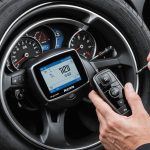Ultimate Checklist for Ensuring Your Off-Road Vehicle’s Rear Differential Lock Works Effectively
Understanding the Importance of Rear Differential Locks
When it comes to off-road driving, having a reliable rear differential lock can be the difference between conquering challenging terrain and getting stuck. Rear differential locks, such as those from ARB, are designed to provide 100% traction on demand, which is crucial for navigating tough off-road conditions[2].
“ARB air lockers allow your vehicle’s differential to operate as a fully open diff on the street, and a full locker on the trail, providing the best of both worlds,” explains an off-road enthusiast with years of experience. This dual functionality makes them an essential upgrade for any serious off-roader.
Also to read : Vital strategies to enhance hydraulic brake efficiency in vehicles navigating hilly terrain
Pre-Installation Checks
Before you install a rear differential lock, there are several checks you need to perform to ensure your vehicle is ready.
Vehicle Compatibility
Make sure the rear differential lock you choose is compatible with your vehicle. For example, the ARB Toyota 8.40-Inch Rear Air Locker Differential is specifically designed for 2005-2015 Toyota Tacomas[2].
Also to see : Ultimate guide: must-check components of your vehicle”s emergency braking system before you hit the road
Condition Check
Inspect your vehicle’s rear differential for any signs of damage or leaks. A rear differential leak can be identified by differential fluid pooling on the ground or strange noises from the differential. Addressing these issues before installation is crucial to avoid further damage[3].
Tire Pressure
Check your tire pressure to ensure it is at the recommended level for off-road driving. Proper tire pressure can significantly impact your vehicle’s traction and stability.
Suspension and Steering
Ensure your vehicle’s suspension and power steering systems are in good condition. Adaptive suspension systems, like those found in the Ford Bronco, can enhance off-road performance by adjusting to terrain conditions in real-time[4].
Installation and Setup
Professional Installation
While some owners may opt for DIY installation, it is highly recommended to have a professional mechanic with experience in off-road vehicle modifications handle the installation. This ensures that the job is done correctly and safely.
Required Components
Make sure you have all the necessary components, including the air locker differential, activation switch, solenoid valve, air line, and bulkhead fitting. An onboard air compressor is also required for operation, which may need to be purchased separately[1].
Wiring and Pneumatic Connections
Ensure all wiring and pneumatic connections are properly secured and tested. Incorrect connections can lead to malfunction or damage to the system.
Operational Checks
Activation and Deactivation
Understand how to activate and deactivate the rear differential lock. This typically involves using a dashboard-mounted switch that controls the air compressor and solenoid valve. Practice using the system in a safe environment to get familiar with its operation[2].
Air Compressor Maintenance
Regularly check and maintain the onboard air compressor. Ensure it is functioning correctly and that the air lines are free from leaks or damage.
Battery and Electrical System
Make sure your vehicle’s battery and electrical system are in good condition. A weak battery or faulty electrical connections can prevent the air locker system from functioning properly.
Maintenance and Troubleshooting
Regular Inspections
Regularly inspect the rear differential lock system for any signs of wear or damage. Check for leaks, worn seals, and ensure all connections are secure.
Differential Fluid Checks
Check the differential fluid level regularly and top it off as necessary. Low differential fluid levels can lead to premature wear and damage to the gears and bearings[3].
Troubleshooting Common Issues
- Leaks: If you notice differential fluid leaking, identify the source of the leak (e.g., differential gasket, pinion seals, side seals) and replace the faulty part.
- Activation Issues: If the air locker fails to activate, check the air compressor, solenoid valve, and air lines for any blockages or leaks.
- Noise: Strange noises from the differential can indicate a lack of lubrication or worn-out gears. Address these issues promptly to avoid further damage.
Driving Tips and Best Practices
Driving Road Conditions
Understand the different road conditions you may encounter and how to adjust your driving accordingly. For example, use the rear differential lock in low-speed, high-traction situations like rock crawling or deep sand[4].
Tire Pressure Adjustment
Adjust your tire pressure according to the terrain. Lower tire pressure can improve traction in off-road conditions, but make sure to reinflate to the recommended pressure for on-road driving.
Speed and Control
Make sure your speed is appropriate for the conditions. Using systems like Trail Control or Hill Descent Control can help maintain a safe and controlled speed in challenging terrain[4].
Practical Insights and Actionable Advice
Owner Manual
Always refer to your vehicle’s owner manual for specific instructions on the use and maintenance of the rear differential lock system.
Weather Conditions
Be aware of the weather conditions and adjust your driving and vehicle setup accordingly. For example, in icy conditions, a limited-slip differential can help distribute power evenly to both wheels, reducing the chance of one wheel spinning out[5].
Avoiding Damage
Avoid driving through deep mud or extreme conditions that could cause damage to the rear differential or other parts of your vehicle. Hard acceleration and heavy loads can also reduce the service life of the differential parts[3].
Ensuring your off-road vehicle’s rear differential lock works effectively is crucial for safe and successful off-road adventures. By following this checklist, you can make sure your vehicle is well-prepared for any terrain you encounter.
Here is a detailed bullet point list to summarize the key points:
-
Pre-Installation Checks:
-
Ensure vehicle compatibility
-
Check for any signs of damage or leaks in the rear differential
-
Verify tire pressure
-
Inspect suspension and power steering systems
-
Installation and Setup:
-
Consider professional installation
-
Ensure all necessary components are included
-
Secure and test wiring and pneumatic connections
-
Install an onboard air compressor if not already present
-
Operational Checks:
-
Understand activation and deactivation procedures
-
Maintain the onboard air compressor
-
Ensure the battery and electrical system are in good condition
-
Maintenance and Troubleshooting:
-
Regularly inspect the system for wear or damage
-
Check differential fluid levels
-
Troubleshoot common issues like leaks, activation problems, and strange noises
-
Driving Tips and Best Practices:
-
Adjust driving according to road conditions
-
Adjust tire pressure as needed
-
Maintain appropriate speed and control
-
Practical Insights and Actionable Advice:
-
Refer to the owner manual for specific instructions
-
Be aware of weather conditions and adjust vehicle setup accordingly
-
Avoid driving in conditions that could cause damage to the vehicle
By following these guidelines, you can ensure that your rear differential lock operates effectively, enhancing your off-road driving experience and keeping you safe on the trails.
Table: Comparison of Key Features in Different Rear Differential Lock Systems
| Feature | ARB Air Locker (Toyota 8.40-Inch) | ARB Air Locker (AAM 9.25-Inch) | Limited-Slip Differential (Yukon Helical Gear) |
|---|---|---|---|
| Compatibility | 2005-2015 Toyota Tacomas | AAM 9.25-Inch Axle | Various vehicles |
| Activation Method | Pneumatically actuated | Pneumatically actuated | Mechanical |
| On-Road Drivability | Unaffected | Unaffected | Affected |
| Off-Road Performance | 100% traction on demand | 100% traction on demand | Even power distribution |
| Required Components | Air compressor, switch, solenoid | Air compressor, switch, solenoid | No additional components |
| Maintenance | Regular inspections, fluid checks | Regular inspections, fluid checks | Regular inspections |
| Warranty | 5-year warranty | 5-year warranty | Varies by manufacturer |
This table highlights the key differences and similarities between various rear differential lock systems, helping you make an informed decision based on your vehicle and off-road needs.








